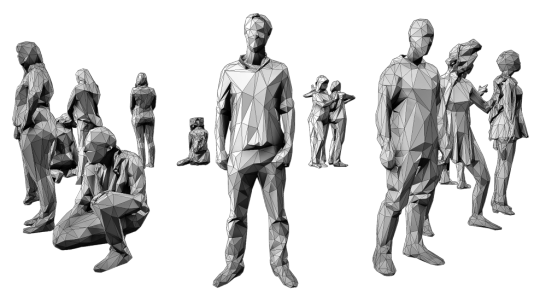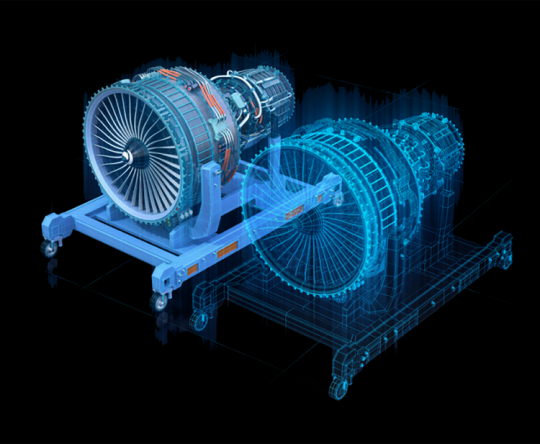Don't wanna be here? Send us removal request.
Photo

(via Metaverse Social Media Development Services | LeewayHertz)
0 notes
Photo

(via Metaverse NFT Marketplace Development Company | LeewayHertz)
0 notes
Photo

(via Metaverse Decentralized Payment and Financial Solution | LeewayHertz)
0 notes
Photo

(via Metaverse Solution & Services Development Company | LeewayHertz)
0 notes
Text
All about metaverse 3D space development
The development of a metaverse 3D space involves creating a virtual reality that can be shared by multiple users. This type of space allows users to fully immerse themselves in a metaverse virtual world, where they can interact with other players and engage in various activities, such as playing games, exploring new environments, and participating in events.
To create a metaverse 3D space, developers need to have a strong foundation of technology and infrastructure in place. This includes a virtual reality platform that can support high-quality graphics and immersive gameplay, as well as a robust network capable of handling the data demands of multiple users. Additionally, developers need to have systems in place for handling user accounts and in-game purchases, as well as tools for moderating player behavior and ensuring a safe and enjoyable experience for all.
One of the main challenges in developing a metaverse 3D space is the integration of various gaming genres and platforms. Players may have different preferences and expectations when it comes to gameplay, and the metaverse 3D space needs to accommodate a wide range of genres, from action-adventure to strategy and role-playing games. In addition, players may be using different devices and operating systems, and the metaverse 3D space needs to be compatible with a variety of hardware and software.
Another challenge is the creation of a virtual economy within the metaverse 3D space. In-game purchases and transactions will likely play a significant role in the metaverse, and developers need to consider how to balance the needs of players and the sustainability of the virtual economy. This may involve setting prices for virtual goods and services, as well as developing systems for players to earn in-game currency through gameplay or other activities.
Overall, the development of a metaverse 3D space presents both exciting opportunities and significant challenges. With the right technology and infrastructure in place, a metaverse 3D space can provide a unique and immersive gaming experience, allowing players to connect and interact in ways that are not possible in the physical world. However, developers need to carefully consider and address the various technical, economic, and social aspects of such a space in order to create a successful and sustainable virtual reality.
1 note
·
View note
Text
All about Metaverse Gamimg space development
The concept of a metaverse, a virtual reality shared by multiple users, has been a staple of science fiction for decades. However, with the advancements in technology and the growing popularity of gaming, the development of a metaverse gaming space has become increasingly feasible.
A metaverse gaming space would allow users to fully immerse themselves in a virtual world, where they can interact with other players and engage in various activities, such as playing games, exploring new environments, and participating in events. This type of gaming space would provide a unique social experience, allowing players to connect with others from all around the world and form virtual communities.
The development of a metaverse gaming space requires a strong foundation of technology and infrastructure. This includes the creation of a virtual reality platform that can support high-quality graphics and immersive gameplay, as well as a robust network capable of handling the data demands of multiple users. Additionally, the metaverse gaming space would need to have a system in place for handling user accounts and in-game purchases, as well as tools for moderating player behavior and ensuring a safe and enjoyable experience for all.
One of the main challenges in developing a metaverse gaming space is the integration of various gaming genres and platforms. Players may have different preferences and expectations when it comes to gameplay, and the metaverse gaming space would need to accommodate a wide range of genres, from action-adventure to strategy and role-playing games. In addition, players may be using different devices and operating systems, and the metaverse gaming space would need to be compatible with a variety of hardware and software.
Another challenge is the creation of a virtual economy within the metaverse gaming space. In-game purchases and transactions will likely play a significant role in the metaverse, and developers will need to consider how to balance the needs of players and the sustainability of the virtual economy. This may involve setting prices for virtual goods and services, as well as developing systems for players to earn in-game currency through gameplay or other activities.
Overall, metaverse game development provides both exciting opportunities and significant challenges. With the right technology and infrastructure in place, a metaverse gaming space could provide a unique and immersive gaming experience, allowing players to connect and interact in ways that are not possible in the physical world. However, developers will need to carefully consider and address the various technical, economic, and social aspects of such a space in order to create a successful and sustainable virtual reality.
0 notes
Text
All about Metaverse Avatars
What exactly is the Metaverse?
Metaverse is the network of virtual reality-based three-dimensional platforms (VR). This Metaverse virtual reality focuses mostly on social relationships. In the Futurism movement and the Science Fiction genre, the Metaverse is described as a new version of the Internet based on a virtual world, developed utilizing augmented reality (AR) to provide users with an interactive experience.
The digital representation of a user in a virtual environment or online community. It is used to participate in a variety of virtual world activities and to engage with other users. Avatars are capable of taking on various forms, including those of humans, animals, and inanimate objects.
Avatars were mostly utilized in text-based virtual worlds and chat rooms in the early days of the Internet. As technology progressed, avatars got more sophisticated and began to emerge in graphical virtual environments and video games. As virtual and augmented reality has risen in popularity, avatars have gotten more realistic and immersive.
Utilizing avatars in virtual spaces provides advantages
One advantage is the ability to create a digital identity distinct from one's true identity. This allows individuals to express themselves in ways that may not be possible in the real world due to societal or cultural constraints.
Avatars also enable users to explore and experiment with numerous identities and roles, as well as personas. An additional advantage of avatars is their capacity for virtual interaction with others. In online forums, many individuals use avatars to interact with others and create relationships. Avatars can also facilitate corporate and educational connections, such as online meetings and classes.
A Metaverse Avatar can be tailored to the user's personality and interests. In certain virtual worlds, users can choose from a variety of premade avatars or create their own. An avatar's physical attributes, including skin tone, hairstyle, and body type, as well as clothing and accessories, can be modified. Some virtual worlds allow users to modify their avatars' animations and movements.
Considerations with the creation of an avatar
One factor is the function of the avatar. For example, an avatar used for business purposes may be more formal and professional, whereas a social avatar may be more expressive and casual. A further aspect is a virtual world or community in which the avatar will be used. Some virtual worlds may have specific themes or aesthetics, and the avatar may be required to adhere to these themes.
A Metaverse Avatar can also represent a user in virtual reality (VR) and augmented reality (AR) scenarios. VR and AR avatars are frequently more realistic and immersive than avatars in other virtual environments since they are designed to fully immerse the user in the virtual environment. VR and AR avatars can be generated using a variety of techniques, including motion capture, 3D scanning, and manual modeling.
Conclusion
Avatars are computer-generated avatars of online community members and virtual world inhabitants. They allow users to express themselves, develop relationships with others, and investigate a variety of identities. Avatars can be customized to match the user's personality and interests, and they can be used in a variety of virtual environments, such as VR and AR. If you want to produce avatars for your metaverse region, you should hire a reliable metaverse development company with extensive knowledge and experience in the sector.
0 notes









